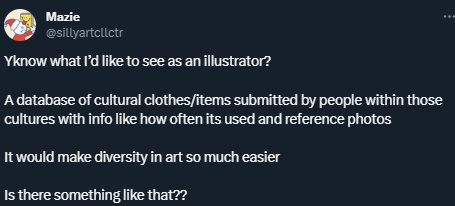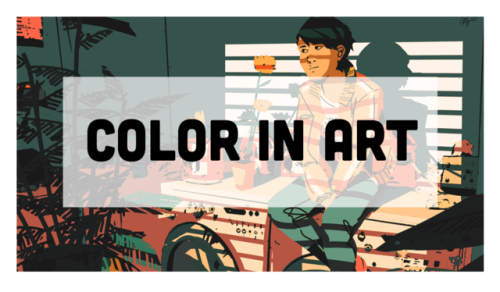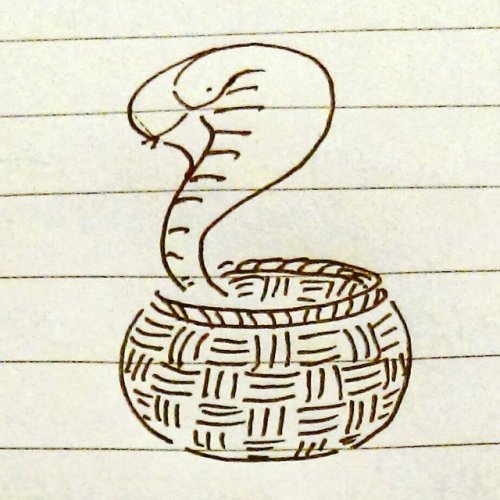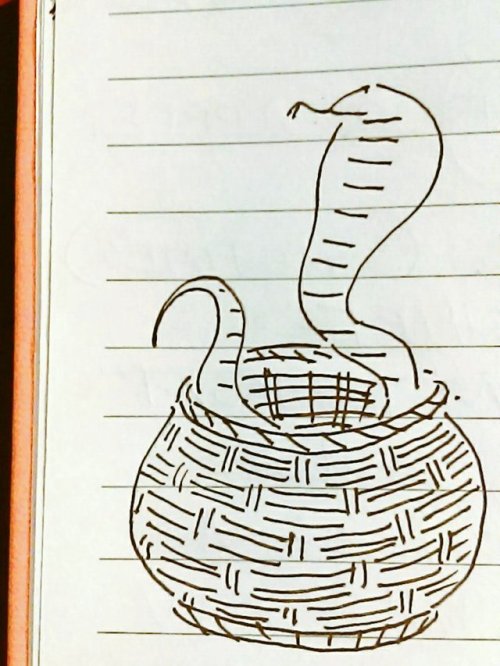Ref Recs For Whump Writers
Ref Recs for Whump Writers
Violence: A Writer’s Guide: This is not about writing technique. It is an introduction to the world of violence. To the parts that people don’t understand. The parts that books and movies get wrong. Not just the mechanics, but how people who live in a violent world think and feel about what they do and what they see done.
Hurting Your Characters: HURTING YOUR CHARACTERS discusses the immediate effect of trauma on the body, its physiologic response, including the types of nerve fibers and the sensations they convey, and how injuries feel to the character. This book also presents a simplified overview of the expected recovery times for the injuries discussed in young, otherwise healthy individuals.
Body Trauma: A writer’s guide to wounds and injuries. Body Trauma explains what happens to body organs and bones maimed by accident or intent and the small window of opportunity for emergency treatment. Research what happens in a hospital operating room and the personnel who initiate treatment. Use these facts to bring added realism to your stories and novels.
10 B.S. Medical Tropes that Need to Die TODAY…and What to Do Instead: Written by a paramedic and writer with a decade of experience, 10 BS Medical Tropes covers exactly that: clichéd and inaccurate tropes that not only ruin books, they have the potential to hurt real people in the real world.
Maim Your Characters: How Injuries Work in Fiction: Increase Realism. Raise the Stakes. Tell Better Stories. Maim Your Characters is the definitive guide to using wounds and injuries to their greatest effect in your story. Learn not only the six critical parts of an injury plot, but more importantly, how to make sure that the injury you’re inflicting matters.
Blood on the Page: This handy resource is a must-have guide for writers whose characters live on the edge of danger. If you like easy-to-follow tools, expert opinions from someone with firsthand knowledge, and you don’t mind a bit of fictional bodily harm, then you’ll love Samantha Keel’s invaluable handbook
More Posts from Dagothurofficial and Others






One of my favorite things about rewatching Cowboy Bebop is seeing all these one-line characters that you instantly know everything about from how they decorate their tiny box in space.
helpful sites for writers
i have a little collection of websites i tend to use for coming up with ideas, naming people or places, keeping clear visuals or logistics, writing basics about places i've never been to, and so on. i tend to do a lot of research, but sometimes you just need quick references, right? so i thought i'd share some of them!
Behind the Name; good for name meanings but also just random name ideas, regardless of meanings.
Fantasy Name Generator; this link goes to the town name generator, which i use most, but there are lots of silly/fun/good inspo generators on there!
Age Calculator; for remembering how old characters are in Y month in Z year. i use this constantly.
Height Comparison; i love this for the height visuals; does character A come up to character B's shoulder? are they a head taller? what does that look like, height-wise? the chart feature is great!
Child Development Guide; what can a (neurotypical, average) 5-year-old do at that age? this is a super handy quickguide for that, with the obviously huge caveat that children develop at different paces and this is not comprehensive or accurate for every child ever. i like it as a starting point, though!
Weather Spark; good for average temperatures and weather checking!
Green's Dictionary of Slang; good for looking up "would x say this?" or "what does this phrase mean in this context?" i love the timeline because it shows when the phrase was historically in use. this is english only, though; i dig a little harder for resources like this in other languages.
Oh my gosh. I just found this website that walks you though creating a believable society. It breaks each facet down into individual questions and makes it so simple! It seems really helpful for worldbuilding!



art by Edward Gorey (1963)

tweet
Something like this would be so colossally helpful. I'm sick and tired of trying to research specific clothing from any given culture and being met with either racist stereotypical costumes worn by yt people or ai generated garbage nonsense, and trying to be hyper specific with searches yields fuck all. Like I generally just cannot trust the legitimacy of most search results at this point. It's extremely frustrating. If there are good resources for this then they're buried deep under all the other bullshit, and idk where to start looking.
Skip Google for Research
As Google has worked to overtake the internet, its search algorithm has not just gotten worse. It has been designed to prioritize advertisers and popular pages often times excluding pages and content that better matches your search terms
As a writer in need of information for my stories, I find this unacceptable. As a proponent of availability of information so the populace can actually educate itself, it is unforgivable.
Below is a concise list of useful research sites compiled by Edward Clark over on Facebook. I was familiar with some, but not all of these.
⁂
Google is so powerful that it “hides” other search systems from us. We just don’t know the existence of most of them. Meanwhile, there are still a huge number of excellent searchers in the world who specialize in books, science, other smart information. Keep a list of sites you never heard of.
www.refseek.com - Academic Resource Search. More than a billion sources: encyclopedia, monographies, magazines.
www.worldcat.org - a search for the contents of 20 thousand worldwide libraries. Find out where lies the nearest rare book you need.
https://link.springer.com - access to more than 10 million scientific documents: books, articles, research protocols.
www.bioline.org.br is a library of scientific bioscience journals published in developing countries.
http://repec.org - volunteers from 102 countries have collected almost 4 million publications on economics and related science.
www.science.gov is an American state search engine on 2200+ scientific sites. More than 200 million articles are indexed.
www.pdfdrive.com is the largest website for free download of books in PDF format. Claiming over 225 million names.
www.base-search.net is one of the most powerful researches on academic studies texts. More than 100 million scientific documents, 70% of them are free










Again this is my personal take on color! It really depends on the situation and what you personally value, and in the end practice is your best friend.
links:
genice’s color practices
color palette challenge (one iteration of it; there’s lot of people who made them)
(not mentioned, but helpful)
Patrick (H) Willems’s video essays on color in film; specifically his ones on
Wonder Woman and Marvel
I thought he had one on John Wick too but I can’t find it. If you like saturated colors though, check that movie out!!
those are only a couple of exterior references, there’s lots out there!! so good luck & I hope this helped!!


Hello friends, this is the long awaited tutorial on Line-Quality, Art-Style, and Same-Face-Syndrome.
Line-Quality is improved by building Muscle-Memory.
You build muscle memory through Drawing-Exercises.
Art-Style is developed over time through Observation and Routine.
Routines such as… Drawing-Exercises.
And now for… the Ultimate Drawing-Exercise-Routine!
It’s called Snake-In-A-Basket!!
Draw any kind of snake inside of any kind of basket. You have 5 to 20 minutes to complete it before each/every Big-Serious-Illustration to tackle. No more, no less time!
Draw it… NOW!

(my example that I drew in GIMP)
Art-Style is not necessarily what you think it is. A fairly common style issue discussed in artist circles is the inability to draw the same character twice while retaining their likeness or the lack of uniqueness which makes our art (recognizable) distinguishable from another’s “oh! YOU drew this!”.
Here are the fastest pathways to attaining the elusive Art-Style:
Repetition!!!!!
Recurrence-of-Thematic-Elements (everyone is sad, robots, someone is always shirtless, etc)
Same Color-Palette used for everything you draw
Same-Tools (line width, brush set, same paper, canvas size)
or Same-Program
(examples of palettes!! you can’t go wrong with having a rainbow)

Some Amount of Explanation:
If you draw on the same size or same scale (A6, A5, A4, A3 | B6, B5 | Letter) or in the same orientation (Landscape or Portrait), it helps you learn Composition intuitively by training you to make use of the space you have. Also it’s easier to print out and frame if you draw on common photo print sizes 4x6, 8x10, etc.
Even if you make a lot of use of Blend/Blur and you’re more of a Painter than a Cel-Shader– deciding to use a Set Personal-Default-Color-Palette instead of randomly choosing them on the Wheel/Triangle-Thing will still give you enough stable consistency.
Onto the next thing!
Same-Face-Syndrome is normally caused by one of two things. If it’s not one then it’s the other: Same Shapes or Same Details.
To make noticebly different characters you have to Exaggerate.


Circle, Square, Triangle, Rectangle? Short, Wide, Tall, Thin?
Before you try your hand at drawing any Face or Body Type, draw another Snake-In-A-Basket first.

You think I’m joking?
No. I’m not.

So to wrap up, you need to Warm Up to draw, you need to make a color palette and stick to it –or just use the same Crayola pencils, or the same kind of Bic pen, same kind of sharpie, .7 or .5, and have themes like “plaid flannels for everybody” or “hoodies and jeans”. Find those things you can execute consistently, like hatching or stippling, and if you like it, stick with it!
Hope this helps!
Now draw a SNAKE-IN-A-BASKET!
dark green is a nice color. underrated
One of the common mistakes I see for people relying on "AI" (LLMs and image generators) is that they think the AI they're interacting with is capable of thought and reason. It's not. This is why using AI to write essays or answer questions is a really bad idea because it's not doing so in any meaningful or thoughtful way. All it's doing is producing the statistically most likely expected output to the input.
This is why you can ask ChatGPT "is mayonnaise a palindrome?" and it will respond "No it's not." but then you ask "Are you sure? I think it is" and it will respond "Actually it is! Mayonnaise is spelled the same backward as it is forward"
All it's doing is trying to sound like it's providing a correct answer. It doesn't actually know what a palindrome is even if it has a function capable of checking for palindromes (it doesn't). It's not "Artificial Intelligence" by any meaning of the term, it's just called AI because that's a discipline of programming. It doesn't inherently mean it has intelligence.
So if you use an AI and expect it to make something that's been made with careful thought or consideration, you're gonna get fucked over. It's not even a quality issue. It just can't consistently produce things of value because there's no understanding there. It doesn't "know" because it can't "know".
-
 hauntedtoaster liked this · 1 month ago
hauntedtoaster liked this · 1 month ago -
 littlelattewanders liked this · 1 month ago
littlelattewanders liked this · 1 month ago -
 movienut14 reblogged this · 1 month ago
movienut14 reblogged this · 1 month ago -
 ghostwithskull liked this · 1 month ago
ghostwithskull liked this · 1 month ago -
 woofdi liked this · 1 month ago
woofdi liked this · 1 month ago -
 seriousfic liked this · 1 month ago
seriousfic liked this · 1 month ago -
 subsilentio liked this · 1 month ago
subsilentio liked this · 1 month ago -
 imsosocold liked this · 1 month ago
imsosocold liked this · 1 month ago -
 maiziebot6000 reblogged this · 1 month ago
maiziebot6000 reblogged this · 1 month ago -
 maiziebot6000 liked this · 1 month ago
maiziebot6000 liked this · 1 month ago -
 o-sn4pple reblogged this · 1 month ago
o-sn4pple reblogged this · 1 month ago -
 o-sn4pple reblogged this · 1 month ago
o-sn4pple reblogged this · 1 month ago -
 87foxeninaboxen liked this · 1 month ago
87foxeninaboxen liked this · 1 month ago -
 twilightknight17 liked this · 1 month ago
twilightknight17 liked this · 1 month ago -
 loudkidsoulfreak reblogged this · 1 month ago
loudkidsoulfreak reblogged this · 1 month ago -
 loudkidsoulfreak liked this · 1 month ago
loudkidsoulfreak liked this · 1 month ago -
 sakurabomb reblogged this · 1 month ago
sakurabomb reblogged this · 1 month ago -
 oh-poofywah-la liked this · 1 month ago
oh-poofywah-la liked this · 1 month ago -
 glimmeroniron liked this · 1 month ago
glimmeroniron liked this · 1 month ago -
 it-all-fades-away-but-you reblogged this · 1 month ago
it-all-fades-away-but-you reblogged this · 1 month ago -
 acquiredboxes liked this · 1 month ago
acquiredboxes liked this · 1 month ago -
 cynicallyoptomisticdaydreamer reblogged this · 1 month ago
cynicallyoptomisticdaydreamer reblogged this · 1 month ago -
 cynicallyoptomisticdaydreamer liked this · 1 month ago
cynicallyoptomisticdaydreamer liked this · 1 month ago -
 intrepidmare reblogged this · 1 month ago
intrepidmare reblogged this · 1 month ago -
 jaxqaq liked this · 1 month ago
jaxqaq liked this · 1 month ago -
 ohsnapsheisback liked this · 1 month ago
ohsnapsheisback liked this · 1 month ago -
 writerofblocks liked this · 1 month ago
writerofblocks liked this · 1 month ago -
 castielify reblogged this · 1 month ago
castielify reblogged this · 1 month ago -
 castielify liked this · 1 month ago
castielify liked this · 1 month ago -
 atlix2 reblogged this · 1 month ago
atlix2 reblogged this · 1 month ago -
 atlix2 liked this · 1 month ago
atlix2 liked this · 1 month ago -
 starslake liked this · 1 month ago
starslake liked this · 1 month ago -
 thr0athugs liked this · 1 month ago
thr0athugs liked this · 1 month ago -
 hereisremina liked this · 1 month ago
hereisremina liked this · 1 month ago -
 writingithink reblogged this · 1 month ago
writingithink reblogged this · 1 month ago -
 shady-ratt liked this · 1 month ago
shady-ratt liked this · 1 month ago -
 fancy-fangs reblogged this · 1 month ago
fancy-fangs reblogged this · 1 month ago -
 fancy-fangs liked this · 1 month ago
fancy-fangs liked this · 1 month ago -
 stilwaterangel liked this · 1 month ago
stilwaterangel liked this · 1 month ago -
 gaelic-holiday reblogged this · 1 month ago
gaelic-holiday reblogged this · 1 month ago -
 gaelic-holiday liked this · 1 month ago
gaelic-holiday liked this · 1 month ago -
 anonymouszephyrus liked this · 1 month ago
anonymouszephyrus liked this · 1 month ago -
 normal-creature reblogged this · 1 month ago
normal-creature reblogged this · 1 month ago -
 resource-blog-for-resources reblogged this · 1 month ago
resource-blog-for-resources reblogged this · 1 month ago -
 nova-mist reblogged this · 1 month ago
nova-mist reblogged this · 1 month ago -
 nova-mist liked this · 1 month ago
nova-mist liked this · 1 month ago -
 skittlebugg liked this · 1 month ago
skittlebugg liked this · 1 month ago -
 dumpy-little-nobody reblogged this · 1 month ago
dumpy-little-nobody reblogged this · 1 month ago -
 hungry-hobbits liked this · 1 month ago
hungry-hobbits liked this · 1 month ago -
 hungry-hobbits reblogged this · 1 month ago
hungry-hobbits reblogged this · 1 month ago
